A developer, who has just discovered Test Suite, built a test case that checks if the SumWorkflow correctly performs the sum of 2 integers, using different input values from an Excel file.
What could be considered an improvement in the way the test was developed?
SumWorkflow:
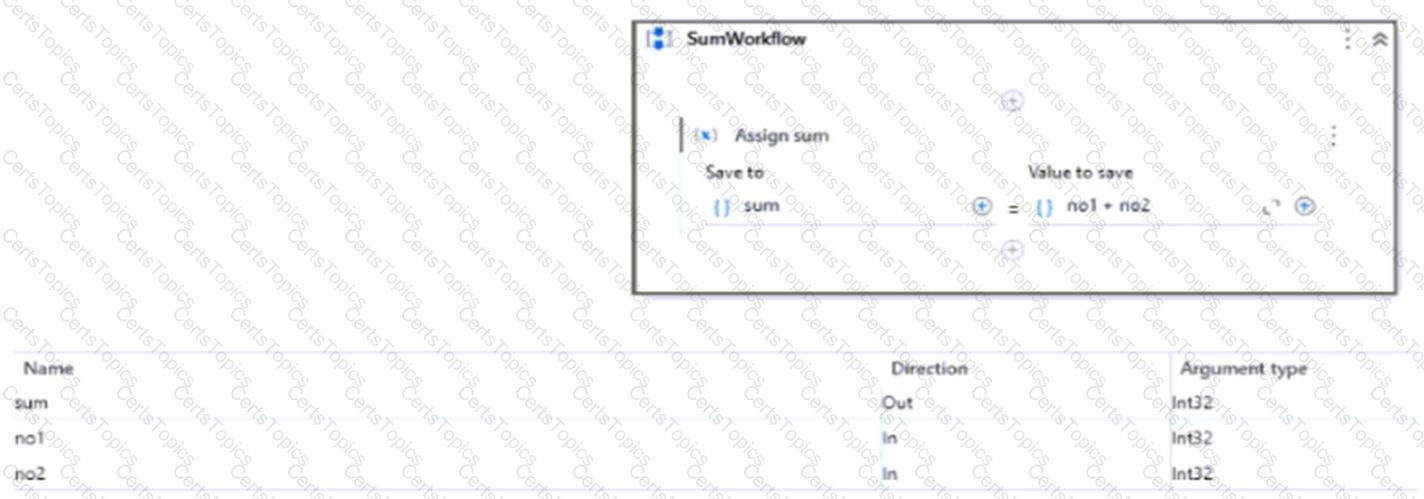
TestCase:
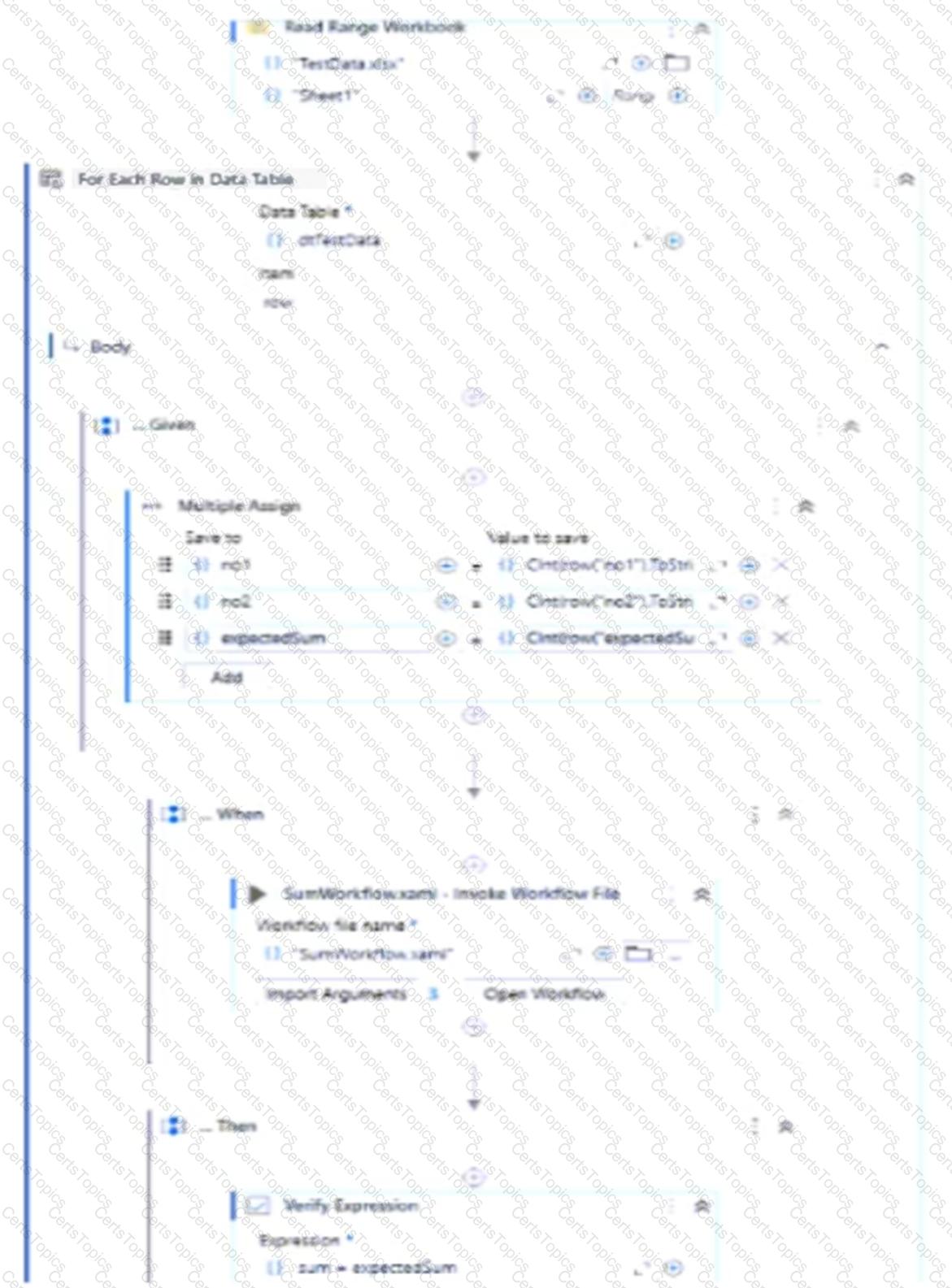
TestData.xlsx:
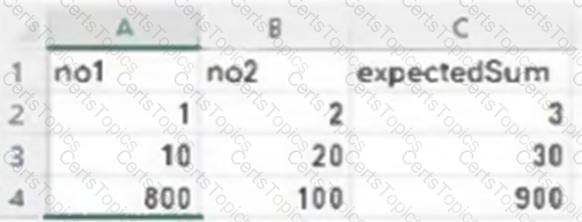
When should a Test Data File in data-driven testing be used?
Which of the following descriptions matches the concept of Integration Testing?
How can an input argument be set for a Test Case in an existing Test Set?
How can the results of a test case be overridden in Test Manager?
In which of the following cases is the Self-Hosted agent needed when creating a pipeline using the UiPath Integration for Azure DevOps?
What does the Timezone configuration in the Add Test Schedule section do?
A developer needs to design a coded automation that approves or denies a loan application based on the loan rate. How should the Execute() entry point method be declared if it needs to return the value for (IsLoanApproved), based on the loan rate (LoanRate)?
What is the BDD test case template used for in UiPath?
Which are the available actions that enable a user to examine the test execution results in UiPath Orchestrator?
What type of license is used for an Unattended Robot in development and testing mode, enabling it to execute both test cases and RPA processes?
Who can edit or delete projects in Test Manager?
How can the test data queue items be uploaded to a queue?
Who can import projects in Test Manager?
What are the prerequisites before executing automated tests through the 'Execute Automated' option in UiPath Test Manager?
By default, how are test executions sorted in Test Manager?
How can the activities covered during a test case execution in UiPath Studio be checked?
How to document a test case using Task Capture?
What is the main purpose of conducting Regression Testing in application development?
What are the actions needed in UiPath Test Manager in order to give the Project Owner role to a different user?
What are the steps to re-execute a test case from UiPath Orchestrator?
Consider the following testing setup in Orchestrator:
Orchestrator folder "FolderA" which contains test data queue "TestData"
Orchestrator folder "FolderB" which contains test data queue "TestData"
Data-driven test case "TestCase123" linked with "TestData" queue from Orchestrator folder "FolderA"
"TestCase123" is published to Orchestrator and executed from "FolderB". What will be the result?
In software testing what does the term "test case” refer to?
How does the licensing model work for Testing runtimes in UiPath?
Where can the variations that have passed or failed for a data-driven test case in UiPath Studio be viewed?
One requirement of the organization's testing strategy is to attach a screenshot to a test case execution whenever it fails. How can this be achieved?
What is the difference between RPA testing and application testing?
What are the tasks that can be executed from the UiPath command-line interface (CLI) while creating a CI/CD pipeline?
Which are the sub-tasks available under test task in UiPath CLI?
Given the following SumWorkflow:
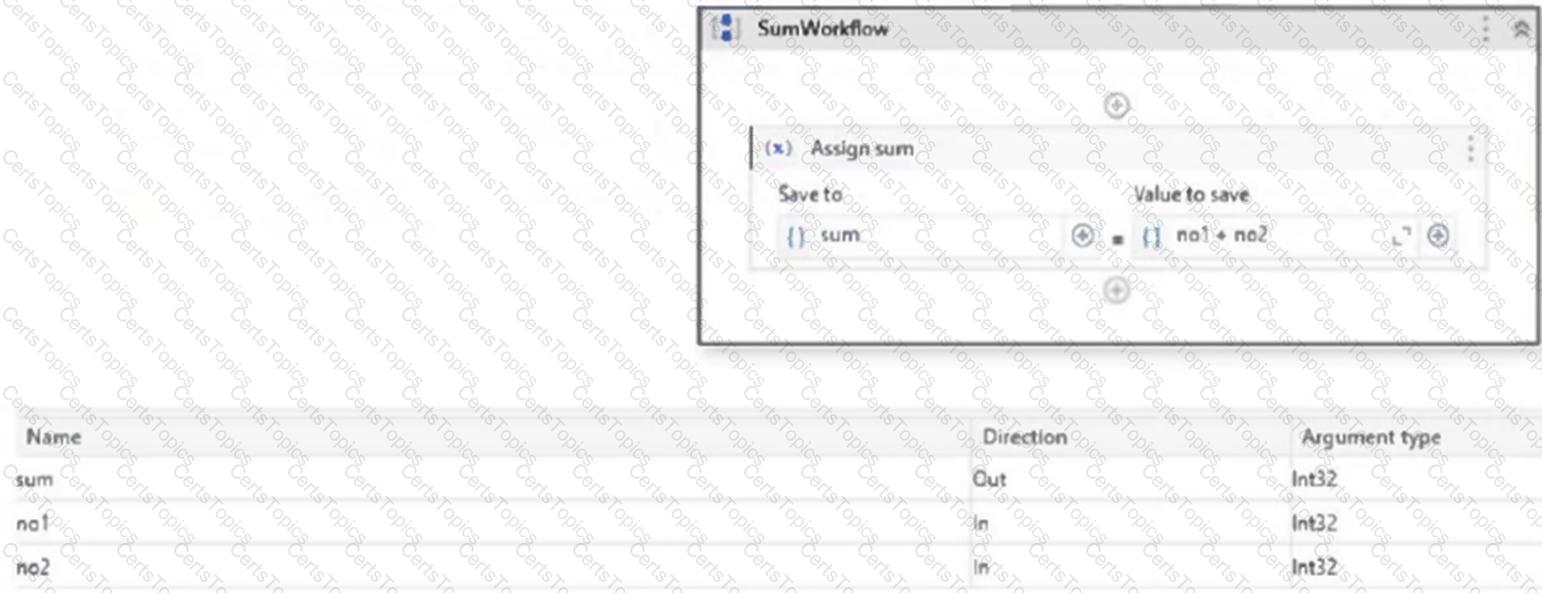
What is the appropriate verification required for testing that the SumWorkflow works as expected?
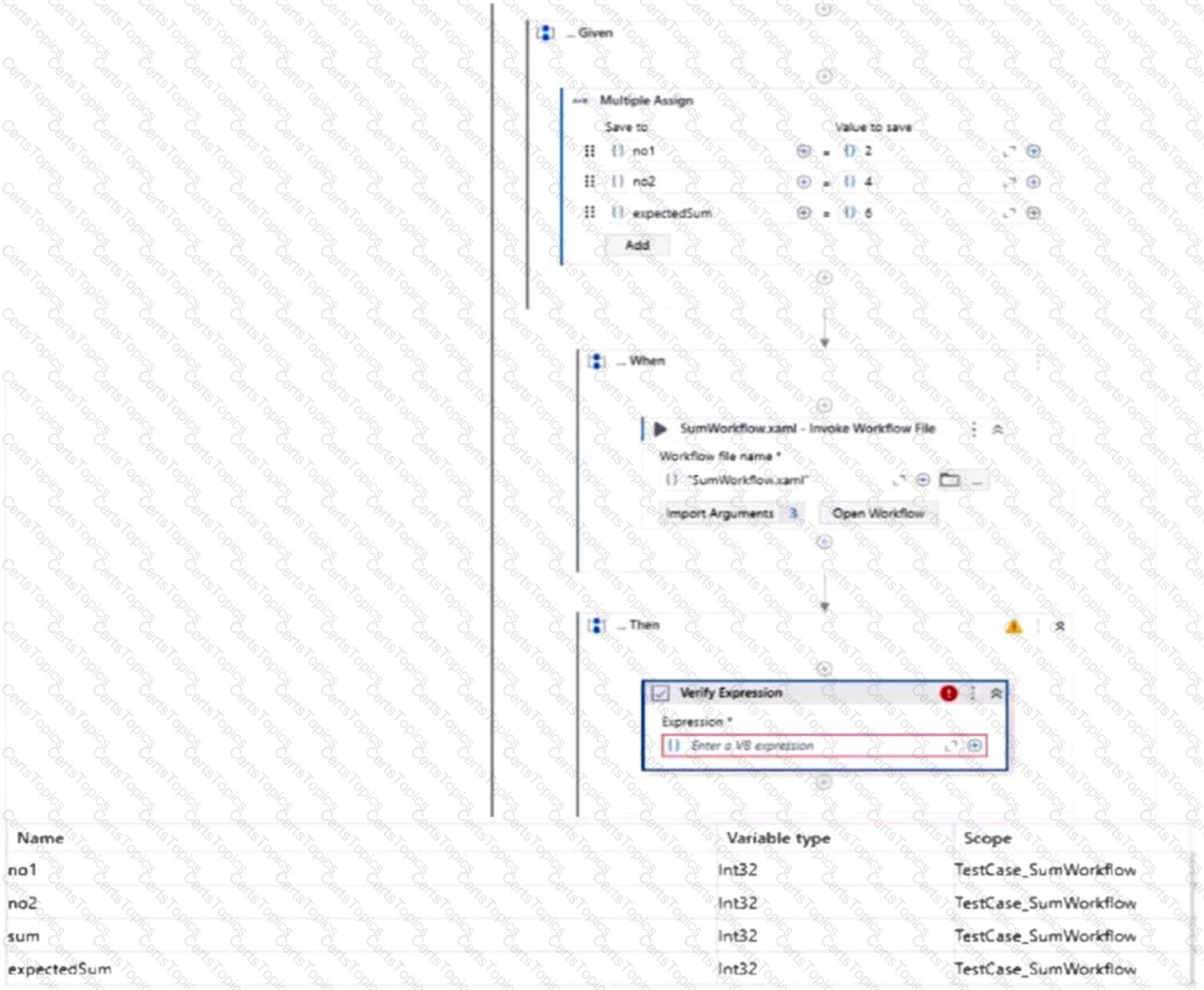
What are the steps to delete a test schedule in UiPath Orchestrator?
There is a test case that performs multiple verifications.
How can the test case be configured so that the execution stops when a verification fails?
According to best practices, what is an acceptable way of validating an application's state before proceeding with certain steps in a process during testing?